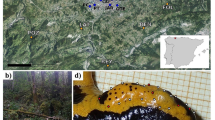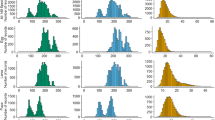Abstract
We describe differences in senescence among populations of grasshoppers that occur along an altitudinal gradient in the Sierra Nevada, California. Experimental males from five populations of the Melanoplus sanguinipes/devastator sibling species complex were reared in each of two thermal culture conditions from eggs of field-caught females. In both culture conditions, we measured the survival of adult cohorts from each population. Differences in the physiological capacity to survive in a sheltered, common environment reveal genetic differences in underlying rates of senescence, providing maternal effects do not affect the rate of aging in offspring. At each temperature, mortality rates increased as a function of age, which indicates that senescence occurs under laboratory conditions. Within each culture condition, cohorts originating from low-elevation populations had greater survival than did cohorts from high elevations. Variation in body size along the altitudinal gradient did not account for the differences in survival. We suggest that high-elevation populations have evolved accelerated senescence as a direct or an indirect result of selection on reproductive schedules, which are potentially truncated by severe winter conditions at the elevated sites.
Similar content being viewed by others
Author information
Authors and Affiliations
Additional information
Received: 25 October 1996 / Accepted: 24 March 1997
Rights and permissions
About this article
Cite this article
Tatar, M., Gray, D. & Carey, J. Altitudinal variation for senescence in Melanoplus grasshoppers. Oecologia 111, 357–364 (1997). https://doi.org/10.1007/s004420050246
Issue Date:
DOI: https://doi.org/10.1007/s004420050246




